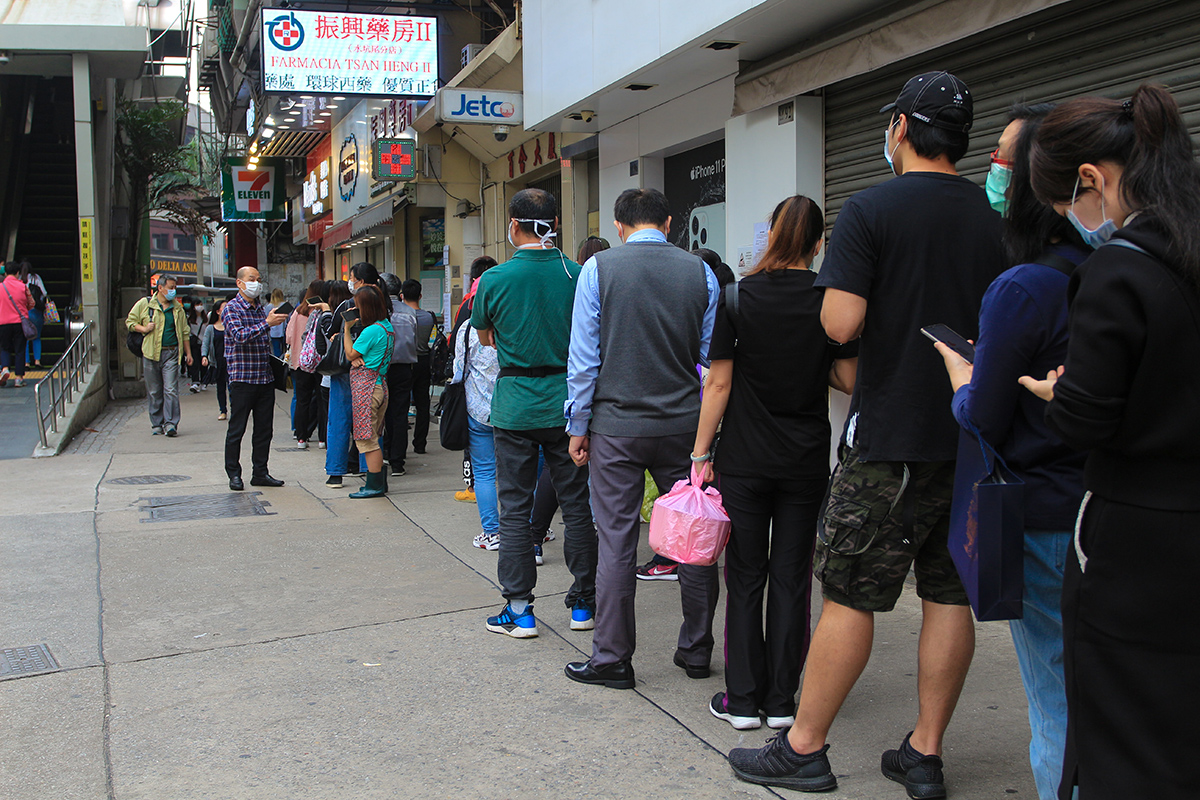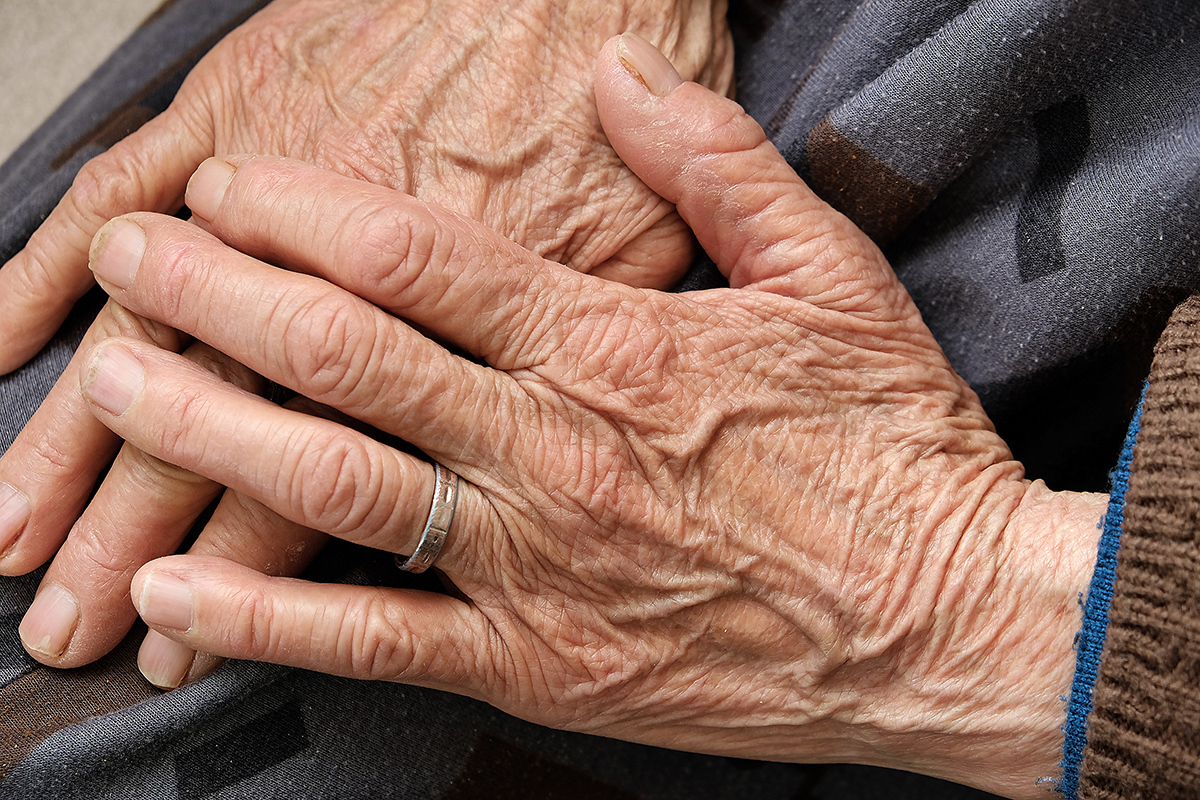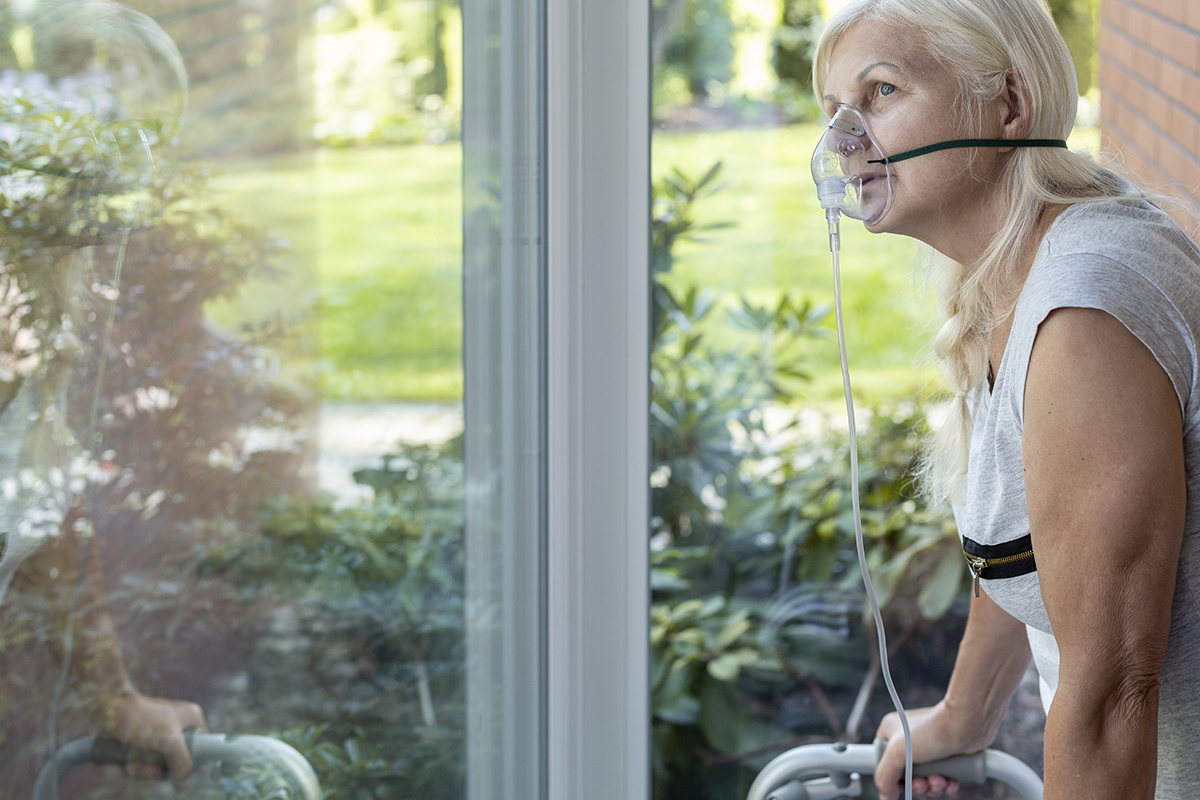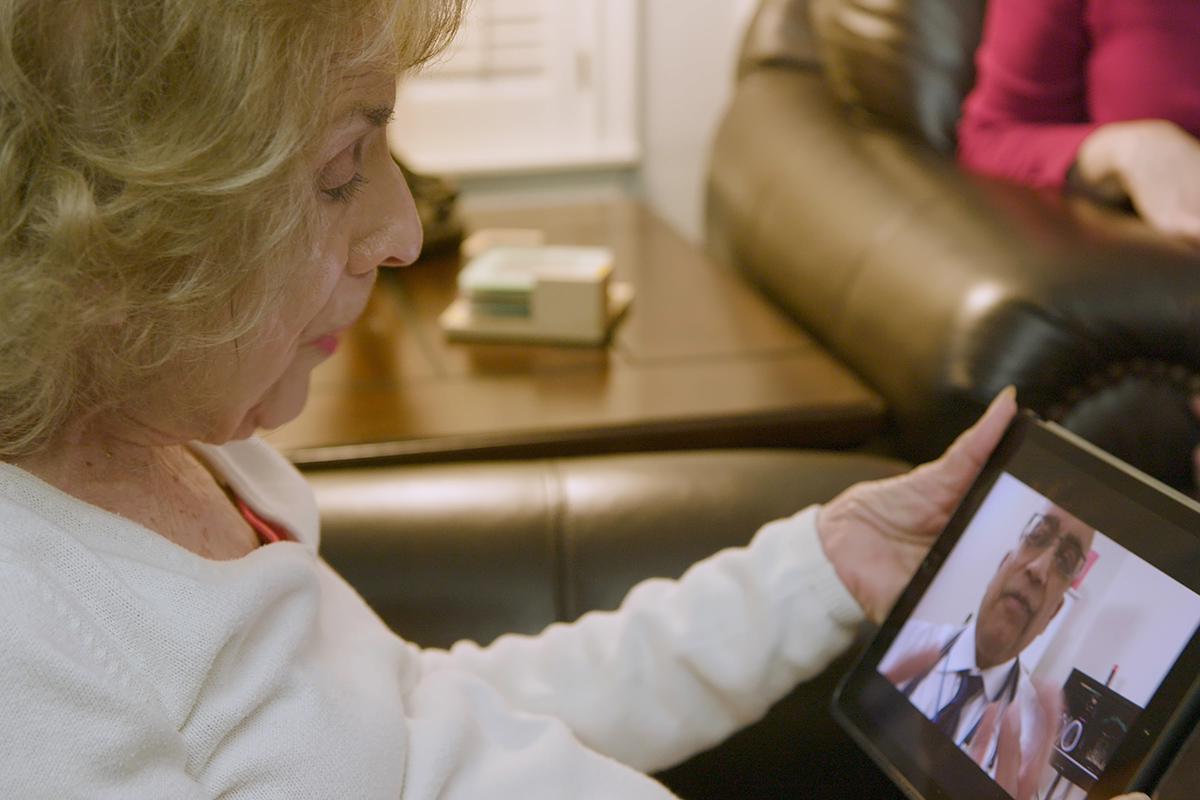Palliative Care Considerations For Patients With Cardiovascular Disease Under COVID-19

COVID-19 has dramatically altered our world, health care systems and supply chains. Older adults with cardiovascular disease especially those over 80 years suffer disproportionately.
This pandemic has stressed the capacity of the hospital infrastructure, ICU beds and ventilatory support, post-acute and community care resources, hospital personnel and personal protection equipment. Risk stratification based on clinical and laboratory data may assist in the process of prognostication and shared decision-making.
When governing authorities declare a crisis, triage of resources is necessary. Life-sustaining medical treatments may be withheld or withdrawn from patients with COVID-19 and others who would ordinarily be given them.1,2
Palliative care can guide, educate, comfort and aid in complex medical decision-making prior to disease presentation and during clinical setbacks, as well as at end of life. This paper suggests opportunities to accelerate palliative care to ease suffering and provide comfort to patients and families during the COVID-19 epidemic.

In China 80% of the deaths from COVID-19 occurred in those 60 years of age or older, and in the United States half of hospitalizations and intensive care unit (ICU) admissions, and 80% of deaths were among those 65 years and older.
COVID-19 mortality is highest in those 85 years and older (10-27%) followed by those 65-84 years (3-11%).3 More than half of those hospitalized in the initial epicenter of Washington state had cardiac disease.4 Adults with multimorbidity, polypharmacy and frailty are at high risk for morbidity and mortality with COVID-19.5
Aging is also associated with immunosenesce, resulting in decreased ability of immune cells to respond to a foreign pathogen.6 Specific COVID-19 cardiac complications include acute cardiac injury (7.2%), shock (8.7%), and arrhythmias (16.7%).7
Palliative care should be integrated with cardiovascular care for those with COVID-19 illness or known cardiovascular disease.
Role of Palliative Care

There are multiple roles for palliative care in the cardiovascular treatment of patients with and at risk for COVID-19. Health care decision-making and advance directives may need to be re-addressed in light of this pandemic.
Advance care planning by primary care and outpatient cardiology providers assists in identifying what matters most and planning care in the event of infection.
Palliative care is also indicated when patients experience cardiogenic shock or end-stage heart failure, consideration of candidacy for advanced therapies, immunosuppression related to transplantation, and acute myocardial infarction especially ST elevation myocardial infarction.
Palliative care is especially important at the end of life, as the dying process has changed with COVID-19; ill patients are isolated from family and friends, and thus dying alone.
Pre-hospital Advance Care Planning

Advance care planning performed by cardiovascular clinicians will achieve the goals of documenting patient values and preferences, ensuring designated health care decision makers, and reducing unwanted hospitalizations.
In addition to discussing hospitalization and options for care in the community, preferences for care at the end of life in the face of COVID-19 should be addressed. Many of these discussions can happen via telehealth visits. The discussion should be revisited for patients with diagnosed or suspected COVID-19.
Previously completed advance directives, POLST (physician orders for life sustaining treatments), MOLST (medical orders for life sustaining treatments) and other state-approved portable orders for medical care should be reviewed in the context of this pandemic. As portable documents, POLST can be applied in any setting.
POLST is voluntary and intended for patients at high risk of dying within 12 months. In the COVID-19 crisis, POLST can be complete especially for those patients who prefer to not be hospitalized or not receive an attempt at resuscitation.
Patients might choose to avoid hospitalization given current needs to prevent transmissions of COVID-19, and because hospitalization means the patient will be isolated from family and friends. POLST can be revised or rescinded by the patient at any time.

Advance care planning should also address decision-making about interventions. Hospitals are not performing elective procedures for the foreseeable future.
Decisions about the optimal timing of interventions, as well as whether interventions offer substantial benefit in the setting of multiple chronic conditions or frailty, may involve clinicians with a palliative care perspective and/or local protocols that guide whether such procedures can be performed or not.
Patients with severe disease and their clinicians may find themselves in difficult positions trying to diagnose the cause of symptoms and ameliorate suffering that would otherwise be addressed by diagnostic testing and procedures that are now postponed as directed by hospital-specific protocols.
Early goals of care discussions are critical as data from China suggest that patients can rapidly decompensate. Two percent of COVID-19 cases in the United States have led to death, however 15% to 22% of those over 80 years with suspected or confirmed infection died worldwide.8 Up to 10% of COVID-19 patients are admitted to ICU.9

Even in the absence of COVID-19, among people older than 66 years of age in the ICU for 14 or more days on mechanical ventilation, only 19% were discharged home directly from hospital with 40% of these dying within 12 months of discharge from the ICU, and those who survived having severe functional dependency and cognitive impairment.10
Palliative care services can alleviate suffering and may prolong life for patients with serious illness.11 Patients and families can be given several options for the course of care for any acute illness, depending on availability of services in each healthcare community.
After considering the patient values and the long duration of isolation for both patient and families associated with hospitalization options may include:
- Home with palliative care or hospice for symptom management
- Skilled nursing facility admission for symptom management and skilled care
- Hospital for symptom management if available without ICU, cardiopulmonary resuscitation (CPR), or ventilator support
- Hospital for all appropriate life-prolonging measures
These discussions require clinicians to understand hospital resources as well as the services available in the patient's community, including skilled nursing and rehabilitation facilities, home health and hospice services.
Amidst this crisis, Centers for Medicare and Medicaid Services (CMS) has waived the "three-midnight" requirement for skilled nursing facility admission, but increasingly visits by health care providers in skilled nursing facilities, and under home health and hospice may be provided by telehealth or telephone. Social work staff or the palliative care team can assist in identifying resources.
Care for Inpatients

In hospital and skilled nursing settings, palliative care specialists may be able to provide virtual support (telehealth or telephone) for patients who are kept in strict isolation, without family visitors and with decreased visits by staff seeking to conserve personal protective equipment (PPE).
Palliative care specialists can provide direct consultation to the primary clinician managing care. Interdisciplinary palliative care teams can support family members who are not allowed to visit.
Visitation restrictions cause emotional burden to patients with serious cardiovascular disease who are accustomed to support from loved ones while in the hospital, as well as to those loved ones.
Video and telephone connection with family and friends, or notes or photographs may mitigate the isolation.
In the hospital and skilled nursing settings, efforts to conserve PPE amidst this pandemic mean that often a single physician examines and interacts with the patient who is infected. Cardiovascular practitioners in the hospital setting may be these primary clinicians but more often will be consulted to provide clinical care and procedures.

Cardiovascular practitioners should understand each patient's overall clinical trajectory, and will play an important role in planning the course of a patients care. They may provide input to goals of care discussions and decision-making about interventions and management of patients whose interventions will be postponed.
All clinicians should be familiar with symptom management and should call upon palliative care specialists for additional help with management. The first step is assuring that appropriate therapies for the underlying cardiovascular issue have been maximized.
Recommendations for managing the most common symptoms experienced by people with significant cardiovascular disease are outlined in Table 1. It is important to note that morphine is not the opioid of choice for patients with cardiovascular disease or renal impairment, due to renally-excreted metabolites that cause delirium, myoclonus and other adverse effects.12
Table 1: Domains of Palliative Care for the Cardiovascular Clinician
| Identifying resources |
|
| Advance care planning |
|
| Symptom Management | Interventions to be considered in a step-wise fashion |
| Dyspnea | Fan on face → CBT & Mindfulness →hydromorphone 0.5 mg-1mg orally every 3 hours titrated very slowly up to 15 mg every 3 hours or IV at 0.5 mg-1 mg every 2 hours titrated to 2 mg every 2 hours (if opioids prescribed, order Senna or bisacodyl daily) |
| Pain | Acetaminophen 500 mg every 6 hours or topical agents: 4% or 5% lidocaine, or 1% diclofenac gel → hydromorphone (dosing as above) → fentanyl patch 12 mcg/hour every 72 hours (NOT for opioid naïve people) (Goodlin, 2009). |
| Dry mouth or thirst | Ice chips or sips of water; artificial saliva (Carboxymethylcellulose) q 2 hours prn |
| Anorexia | High calorie snacks or supplements; Consider mirtazepine 7.5 -15 mg at HS |
| Agitation & Delirium | Haloperidol 0.25 mg po or SL every 15 minutes until calm up to 2 mg maximum → # lorazepam liquid 0.25 mg titrated to 2 mg orally until calm+ |
| Nausea, Vomiting | Metoclopramide 5-10 mg every 6 hours po prn vomiting or ondansetron 4 mg every 8 hours po titrated to 8 mg every 8 hours. ~ |
| Constipation | Polyethylene glycol → Bisacodyl suppository → warm tap water enema. |
| Anxiety & Depression | Sertraline 25 mg daily is a safe option as it does not prolong the QTc interval. It can be titrated to a maximum dose of 200 mg |
| Resources | Conversations and decision-making |
CBT=cognitive behavioral therapy; IV=intravenous; po=by mouth; SL=sublingually
+ People with Parkinsonism, Lewy body disease or pre-existing cogwheel rigidity, for whom haloperidol is contraindicated, quetiapine 12.5-25 mg orally up to 4 times daily can be given.
# It is important to be cognizant that lorazepam can cause paradoxical agitation.
~ These agents have potential adverse effects: metoclopramide can cause tardive dyskinesia and parkinsonism, and ondansetron can prolong QTc.
Care of the Dying

At the end of life, interdisciplinary care is important both for the patient and the family. Patients with confirmed or suspected COVID-19 will be isolated and are unlikely to die with loved ones at their side, unless they are at home.
Telephone and video via tablets and smart phones should be utilized to allow family and friends to be present with the patient and to say goodbye. Video and phone are also means of spiritual and psychosocial support. Simple interventions such as playing music the patient likes can also be supportive.
As patients approach the end of life, monitoring equipment can be discontinued with the main focus being management of symptoms. Opioids are the most potent therapy for dyspnea, and should be administered continuously or around the clock. All clinicians should be provided with protocols to withdraw invasive support and manage terminal dyspnea or other symptoms.
Death at home may be attended by a limited number of caregivers. Hospices are required by CMS to provide care in disasters, and most hospices' staff are making face to face visits.
Death at home requires the family or care provider to notify the physician managing care or the mortuary of time the death. Mortuary response systems are being organized to respond to the surge in deaths in most communities.
Bereavement support and acknowledgement of both our loss as clinicians, and the family's loss should be routine after a death.
Provider Resiliency

The cardiovascular care team is immersed on the front lines preparing for the surge of COVID-19 patients or already deeply engaged depending on location. Usual stress and long hours have been superseded by novel adversaries.
Clinicians work lacking PPE in a new environment, with risks of COVID-19 illness and mortality for themselves and their families. Usual approaches to diagnosis and care are altered. The complex triaging and long hours are physically and emotional draining.
When these stresses add to the existing burnout in medical personnel, the physical and mental health of our providers is clearly at risk. We all must work together with employers and healthcare systems to provide mental health and medical support for ourselves, as well as for family at home.
Conclusion
The COVID-19 pandemic has resulted in significant consequences for patients who require complex medical decisions in a resource scarce health care environment. Palliative care provides assistance to providers to integrate planning and comfort into care.
Telehealth can advance palliative care initiatives especially prior to hospitalization.
By providing support to our most vulnerable adult patients, we can minimize pain and suffering and promote dignity.
References
- Truog RD, Mitchell C, Daley GQ. The toughest triage-allocating ventilators in a pandemic. N Engl J Med 2020;March 23:[Epub ahead of print]. DOI: 10.1056/NEJMp2005689.
- Emanuel EZ, Persad G, Upshur R, et al. Fair allocation of scarce medical resources in the time of Covid 19. N Engl J Med 2020;March 23:[Epub ahead of print]. DOI: 10.1056/NEJMsb2005114.
- Severe outcomes among patients with coronavirus 2019 (COVID19)-United States. MMWR Mortal Wkly Rep. February 12-March 16, 2020. ePub:18 March 2020. DOI: 10.15585/mmwr.mm69e2.
- Arentz M, Yim E, Klaff L, et al. Characteristics and outcomes of 21 critically ill patients with COVID-19 in Washington state. JAMA 2020. DOI: 10.1001/jama.2020.4326.
- Bonow RO, Fonoraw GC, O'Gara PT. Association of coronavirus 2019 (Covid-19) with myocardial injury and mortality. JAMA Cardiol 2020; March 27:[Epub ahead of print]. DOI: 10.1001/jamacardio.2020.1105.
- Nikolich-Žugich J. The twilight of immunity: emerging concepts in aging of the immune system. Nat Immunol 2018;19:10-19. doi: 10.1038/s41590-017-0006-x.
- Xiong Tian-Yuan, Redwood S, Prendergast B, Chen M. Coronaviruses and the cardiovascular system: Acute and long term implications. Eur Heart J 2020;March 18:[Epub ahead of print]. Doi.org/10.1093/eurheartj/ehaa231.
- Coronavirus Disease 2019 (COVID-10). March 26, 2020. Available here. Accessed March 31,2020.
- Poston J, Patel BK, Davis AM. Management of critically ill adults with COVID-19. JAMA 2020;March 26:[Epub ahead of print]. DOI: 10.1001/jama.2020.4914.
- Parotto M, Herridge M. Outcomes after one week of mechanical ventilation for families and patients. ICU Management and Practice 2017;17(3):174-176.
- Hamano J, Yamaguchi T, Maeda I, Suga A, Hisanaga T, Ishihara T, et al. Multicenter cohort study on the survival time of cancer patients dying at home or in a hospital: Does place matter? Cancer 2016;122:1453-1460.
- Goodlin SJ. Palliative care in congestive heart failure. J Am Coll Cardiol 2009;(5):386-396.
Clinical Topics: Cardiac Surgery, Cardiovascular Care Team, Congenital Heart Disease and Pediatric Cardiology, COVID-19 Hub, Geriatric Cardiology, Heart Failure and Cardiomyopathies, Invasive Cardiovascular Angiography and Intervention, Prevention, Stable Ischemic Heart Disease, Valvular Heart Disease, Cardiac Surgery and Arrhythmias, Cardiac Surgery and CHD and Pediatrics, Cardiac Surgery and Heart Failure, Cardiac Surgery and SIHD, Cardiac Surgery and VHD, Congenital Heart Disease, CHD and Pediatrics and Arrhythmias, CHD and Pediatrics and Interventions, Acute Heart Failure, Interventions and Structural Heart Disease, Chronic Angina
Keywords: Palliative Care, Hospice and Palliative Care Nursing, Shock, Cardiogenic, Triage, Pandemics, Outpatients, Cardiovascular Diseases, Myocardial Infarction, Decision Making, COVID-19, Coronavirus, Coronavirus Infections, Heart Defects, Congenital, Geriatrics, Heart Failure, Secondary Prevention, Angina, Stable, Heart Valve Diseases, Cardiac Surgical Procedures, Cardiology Magazine, ACC Publications
< Back to Listings
